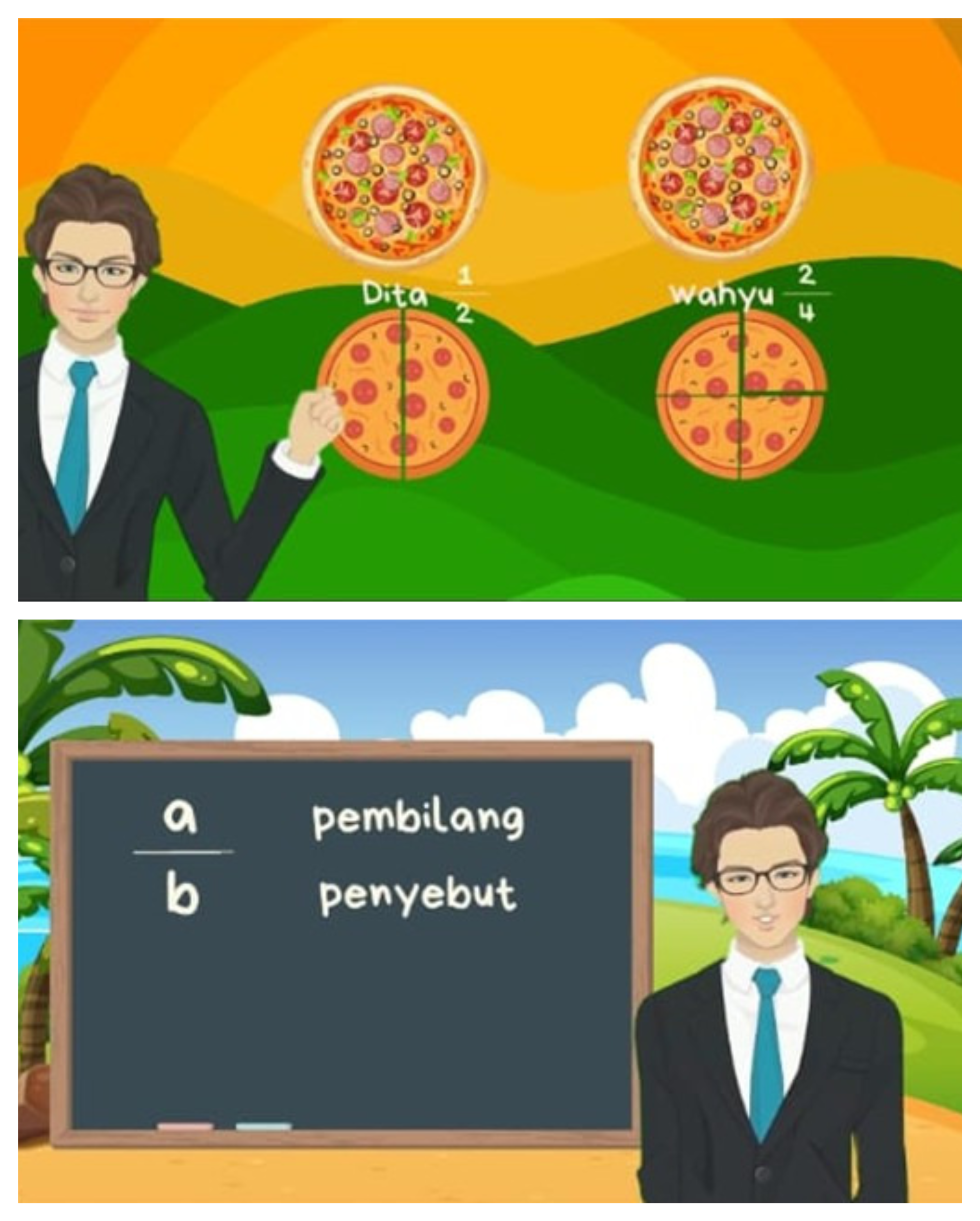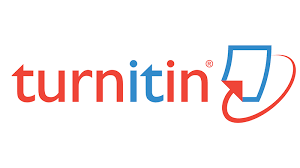PENGEMBANGAN VIDEO ANIMASI DENGAN MATERI PECAHAN KELAS IV SEKOLAH DASAR
DOI:
https://doi.org/10.31100/histogram.v9i2.3924Keywords:
Animated Video, Mathematics Learning, FractionsAbstract
ABSTRAK
Pembelajaran matematika, khususnya materi pecahan, sering dianggap sulit oleh siswa sekolah dasar oleh karena itu dibutuhkan media yang atraktif serta partisipatif. Penelitian ini dimaksudkan untuk merancang media animasi video pada topik pecahan bagi peserta didik kelas IV SD serta mengevaluasi tingkat kelayakan media tersebut. Pendekatan penelitian yang diterapkan merupakan penelitian dan pengembangan (R&D) dengan menggunakan model ADDIE yang meliputi lima langkah, yaitu analysis (analisis), design (desain), development (pengembangan), implementation (implementasi), serta evaluation (evaluasi). Desain penelitian meliputi uji alfa, revisi, dan uji beta. Subjek penelitian yaitu 14 siswa kelas IV SD Islam Daulatul Ummah Al-Islamiyah Waringin. Instrumen penelitian berupa lembar validasi ahli media, lembar validasi ahli materi, dan angket respon siswa. Hasil validasi ahli media memperoleh skor 85 kategori sangat layak, sementara itu penilaian dari ahli materi memperoleh skor 80 kategori sangat layak. Hasil angket respon siswa menunjukkan kategori baik dengan persentase 60,08%, maka media animasi video dinilai valid dan praktis diterapkan oleh guru sebagai media pembelajaran matematika pada materi pecahan.
ABSTRACT
Mathematics learning, particularly the topic of fractions, is often considered difficult by elementary school students; therefore, attractive and participatory media are needed. This study aims to design an animated video learning medium on the topic of fractions for fourth-grade elementary students and to evaluate its level of feasibility. The research approach used is Research and Development (R&D) employing the ADDIE model, which consists of five stages: analysis, design, development, implementation, and evaluation. The research design includes an alpha test, revision, and beta test. The subjects of this study were 14 fourth-grade students of SD Islam Daulatul Ummah Al-Islamiyah Waringin. The research instruments included a media expert validation sheet, a material expert validation sheet, and a student response questionnaire. The media expert validation scored 85, categorized as highly feasible, while the material expert validation scored 80, also categorized as highly feasible. The results of the student response questionnaire showed a good category with a percentage of 60.08%. Therefore, the animated video media was considered valid and practical for teachers to implement as a learning medium for mathematics on the topic of fractions.
References
Alawiyah, T., Muttaqien, M., & Hadiansah, H. (2021). Pengembangan Media Pembelajaran Berbasis Android pada Materi Sistem Imunitas. Bioeduca: Jurnal Pendidikan Biologi, 3(2), 112–123. https://doi.org/10.21580/bioeduca.v3i2.6635
Alfurqan, A., Trinova, Z., Tamrin, M., & Khairat, A. (2020). Membangu Sebuah Pengajaran Filosofi Personal: Konsep dari Pengembangan dan Pendidikan Dasar. Tarbiyah Al-Awlad: Jurnal Kependidikan Islam Tingkat Dasar, 10(2), 213–222. https://doi.org/10.15548/alawlad.v10i2.2579
Andini, S. R., Putri, V. M., Devi, M. Y., & Erita, Y. (2021). Mendesain Pembelajaran PKn dan IPS yang Inovatif dan Kreatif dengan Menggunakan Model Pembelajaran pada Tingkat Sekolah Dasar. Jurnal Basicedu, 5(6), 5671–5681. https://doi.org/10.31004/basicedu.v5i6.1760
Awalia, I., Pamungkas, A. S., & Alamsyah, T. P. (2019). Pengembangan Media Pembelajaran Animasi Powtoon pada Mata Pelajaran Matematika di Kelas IV SD. KREANO Jurnal Matematika Kreatif-Inovatif, 10(1), 49–56. https://doi.org/10.15294/kreano.v10i1.18534
Azzahra, S., & Sya, M. F. (2023). StrategiPembelajaran Inovatif dan Kreatif di Sekolah Dasar. Krimah Tauhid, 2(1), 329–338. https://doi.org/10.30997/karimahtauhid.v2i1.7943
Hakim, L., Zainiyati, H. S., Hana, R. Al, & Alimina, S. F. (2021). The Implementation of ADDDIE Al-Qur’an Hadith Learning Design Model at MTs Assathi’ Karas. Edukasia Jurnal Penelitian Pendidikan Islam, 16(1), 113–124. https://doi.org/10.21043/EDUKASIA.V16I1.9642
Hidayat, F., & Nizar, M. (2021). Model ADDIE (Analysis, Design, Development, Implementation and Evaluation) dalam Pembelajaran Pendidikan Agama Islam. Jurnal Inovasi Pendidikan Agama Islam, 1(1), 28–37. https://doi.org/10.15575/jipai.v1i1.11042
Janah, F. N. M., Nuroso, H., Mudzanatun, M., & Isnuryantono, E. (2023). Penggunaan Aplikasi Canva dalam Media Pembelajaran Matematika di Sekolah Dasar. Jurnal Pendidikan Dasar, 11(1), 1–9. https://doi.org/10.20961/jpd.v11i1.72716
Januar, R. L., & Nuriadin, I. (2024). Edupreneurship: Manfaat Video Pembelajaran Matematika pada Platform Youtube. Histogram: Jurnal Pendidikan Matematika, 8(1), 25–36. https://journal.matappa.ac.id/index.php/histogram/article/view/3359/1631
Lestyorini, R. D., & Noviyanto, T. (2019). Pengembangan Media Pembelajaran Matematika pada Materi Pecahan Berbasis Adobe Flash di Kelas V SD Negeri Kabupaten Indramayu. DWIJA CENDEKIA Jurnal Riset Pedagogik, 3(2), 217–225. https://doi.org/10.20961/jdc.v3i2.34938
Najah, H. (2023). Pengembangan Media Pembelajaran Matematika Berbasis Video Animasi pada Materi Bilangan Bulat Siswa Kelas IV SDN 01 Kalijaga Tengah [Universitas Hamzanwadi]. 5415
Permatasari, I. S., Hendracipta, N., & Pamungkas, A. S. (2019). Pengembangan Media Pembelajaran Video Animasi Hands Move dengan Konteks Lingkungan pada Mapel IPS. TERAMPIL Jurnal Pendidikan dan Pembelajaran Dasar, 6(1), 34–48. https://doi.org/10.24042/TERAMPIL.V6I1.4100
Prasetyo, E., & Hardjono, N. (2020). Efektivitas Penggunaan Media Pembelajaran Permainan Tradisional Congklak terhadap Minat Belajar Matematika (MTK) Siswa Sekolah Dasar. Jurnal Pendidikan Dasar Borneo, 2(1), 111–119. https://doi.org/10.35334/judikdasborneo.v2i1.1450
Putri, Z. E., Isrok’atun, I., & Sunaengsih, C. (2024). Pengaruh Media Video Animasi terhadap Pemahaman Konsep Siswa pada Materi Keliling Bangun Datar Kelas III SDN Sadagori 1. Al-Madrasah: Jurnal Ilmiah Pendidikan Madrasah Ibtidaiyah, 8(4), 1854–1869. https://doi.org/10.35931/am.v8i4.4092
Rohmah, N. N. S., Sunismi, S., Surahmat, S., & Faradiba, S. S. (2024). Pengembangan Video Interaktif Statistika Berbabis Whiteboard Animation untuk Meningkatkan Minat Belajar Siswa. Histogram: Jurnal Pendidikan Matematika, 8(2), 1–11. https://doi.org/10.31100/histogram.v8i2.3645
Sisca, S., Cahyadi, F., & Wakhyudin, H. (2020). Analisis Kesulitan Siswa Kelas II Sekolah Dasar dalam Menyelesaikan Soal Pemecahan Masalah Matematika Materi Perkalian dan Pembagian. Jurnal Gentala Pendidikan Dasar, 5(2), 183–190. https://doi.org/10.22437/gentala.v5i2.9356
Sugihartini, N., & Yudiana, K. (2018). Addie Sebagai Model Pengembangan Media Instruksional Edukatif (Mie) Mata Kuliah Kurikulum dan Pengajaran. Jurnal Pendidikan Teknologi dan Kejuruan, 15(2), 277–286. https://doi.org/10.23887/JPTK-UNDIKSHA.V15I2.14892
Widiansyhrani, W. (2022). Pengembangan Media Pembelajaran Berbasis Aplikasi Android Menggunakan Software Smart Apps Creator 3 (SAC) Materi Sistem Tata Surya Kelas Vi Sekolah Dasar. JITTER Jurnal Ilmiah Teknologi Informasi Terapan, 8(2), 291–299. https://doi.org/10.33197/jitter.vol8.iss2.2022.798

Downloads
Published
Issue
Section
Citation Check
License
Copyright (c) 2025 Haeron Nasvi, Donna Boedi Maritasari, Muh. Yazid

This work is licensed under a Creative Commons Attribution-NonCommercial-NoDerivatives 4.0 International License.
Please find the rights and licenses in Histogram: Jurnal Pendidikan Matematika. By submitting the article/manuscript, the author(s) accept this policy.
1. License
The non-commercial use of the article will be governed by the Creative Commons Attribution license as currently displayed on Creative Commons Attribution-ShareAlike 4.0 International.
2. Author's Warranties
The author warrants that the article is original, written by a stated author(s), has not been published before, contains no unlawful statements, does not infringe the rights of others, is subject to copyright that is vested exclusively in the author and free of any third party rights, and that any necessary written permissions to quote from other sources have been obtained by the author(s).
3. User Rights
Histogram: Jurnal Pendidikan Matematika's spirit is to disseminate articles published for free. Under the Creative Commons license, Histogram: Jurnal Pendidikan Matematika permits users to copy, distribute, display, and perform the work for non-commercial purposes only. Users will also need to attribute authors and Histogram: Jurnal Pendidikan Matematika when distributing works in the journal.
4. Rights of Authors
Authors retain all their rights to the published works, such as (but not limited to) the following rights;
- Copyright and other proprietary rights relating to the article, such as patent rights,
- The right to use the substance of the article in one's future works, including lectures and books,
- The right to reproduce the article for one's purposes,
- The right to self-archive the article,
- The right to enter into separate, additional contractual arrangements for the non-exclusive distribution of the article's published version (e.g., post it to an institutional repository or publish it in a book), with an acknowledgment of its initial publication in this journal (Histogram: Jurnal Pendidikan Matematika).
5. Co-Authorship
If other authors jointly prepared the article, any author submitting the manuscript warrants that all co-authors have authorized them to agree on this copyright and license notice (agreement) on their behalf and agree to inform their co-authors of the terms of this policy. Histogram: Jurnal Pendidikan Matematika will not be held liable for anything arising from the author(s) internal dispute. Histogram: Jurnal Pendidikan Matematika will only communicate with the corresponding author.
6. Royalties
This agreement entitles the author to no royalties or other fees. To such an extent that it is legally permissible, the author waives their right to collect royalties relative to the article regarding any use by Histogram: Jurnal Pendidikan Matematika.
7. Miscellaneous
Histogram: Jurnal Pendidikan Matematika will publish the article (or have it published) in the journal if the editorial process is completed. Histogram: Jurnal Pendidikan Matematika h editors may modify the article to a style of punctuation, spelling, capitalization, referencing, and usage that deems appropriate. The author acknowledges that the article may be published to be publicly accessible, and such access will be free of charge for the readers, as mentioned in point 3.




